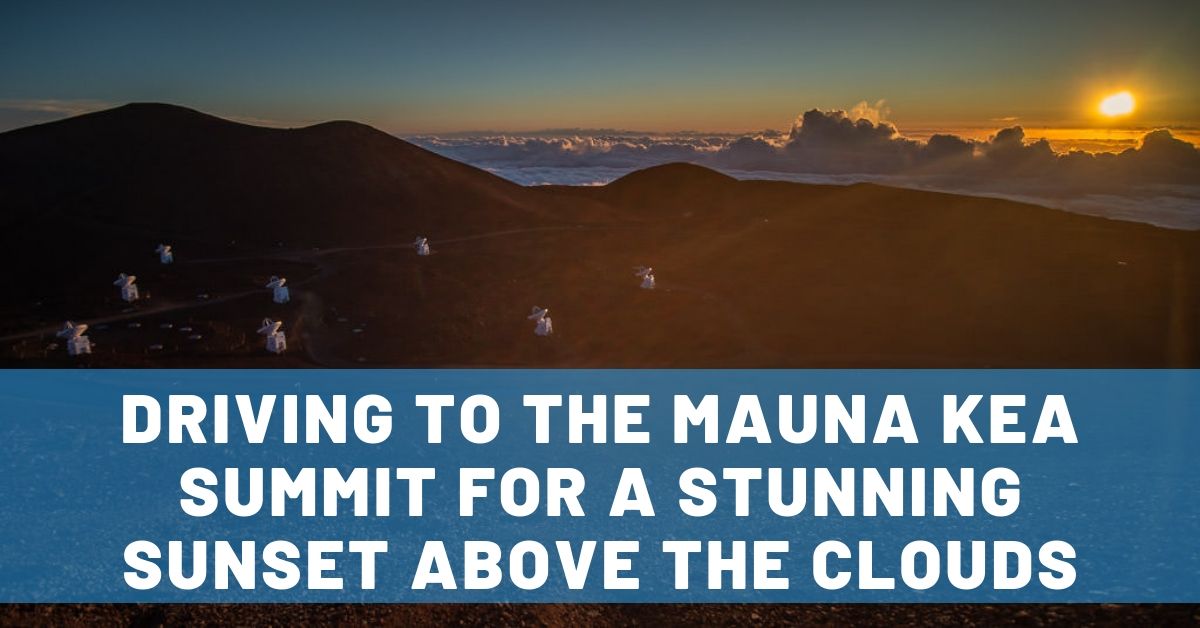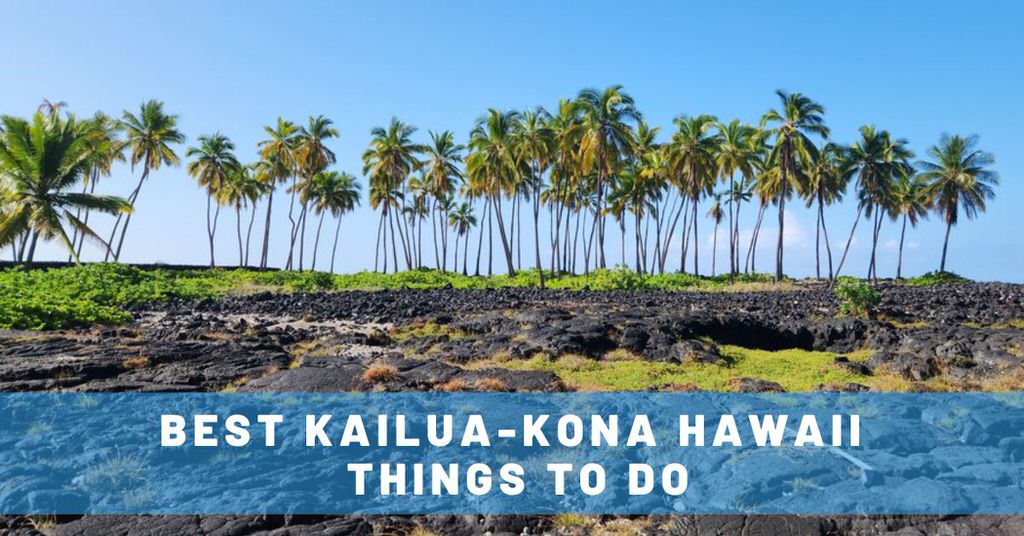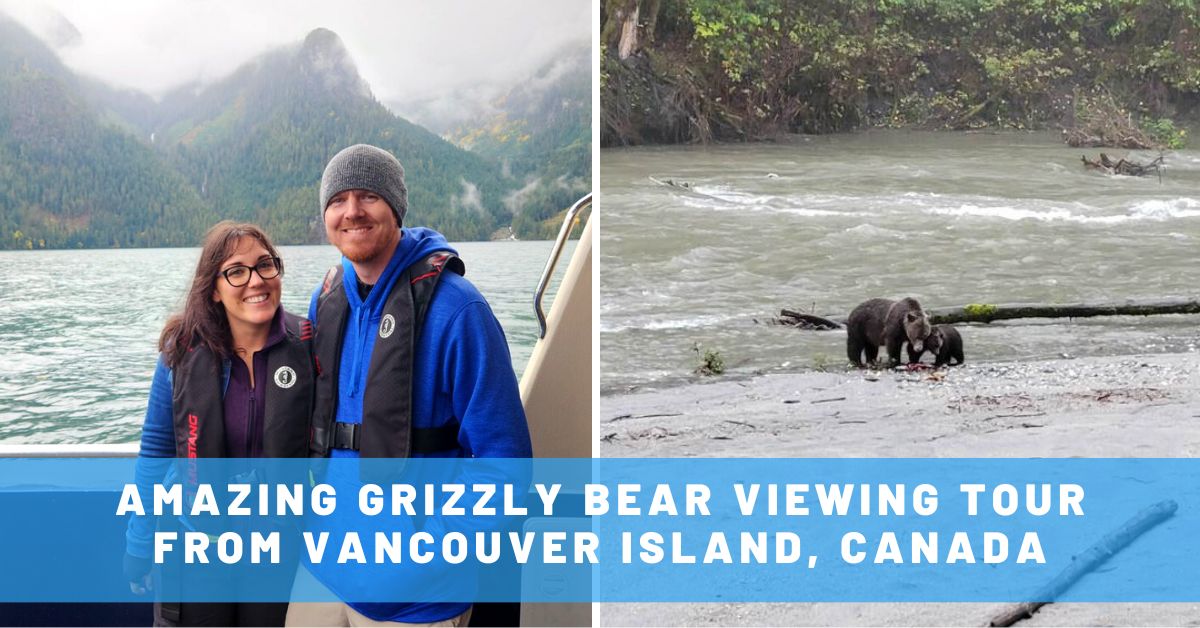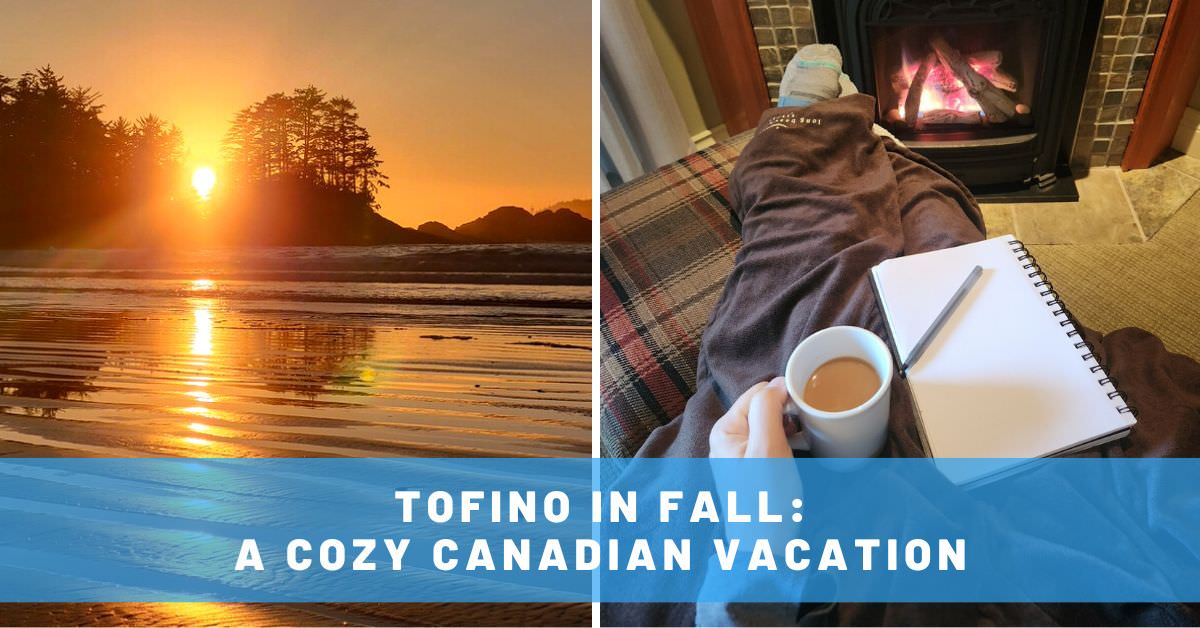We didn't plan to take the almost 14,000-ft adventure friving to Mauna Kea Summit on this trip to the Big Island. Although we loved the idea, we knew four-wheel drive was necessary, adverse conditions were possible, most rental car companies forbid you from taking your car to the top, and it was far out of the way of where we'd be staying while house sitting in Pahoa.
However, once we arrived for our sit, the homeowners assured us that the dogs would be fine, their four-wheel-drive truck could definitely handle it, and that we shouldn't miss the chance to go to the summit of Mauna Kea. Okay … fine, twist our arms!
About Sacred Mauna Kea
If you know anything about the Hawaiian islands, you know they were created by volcanoes and still have pretty consistent volcanic activity on the Big Island, (Including the dramatic and damaging end to the 35-year-long Kilauea eruption and the Mauna Loa eruption in 2022.)
Mauna Kea is one of six volcanos that formed the island of Hawaii. While a dormant volcano now, having last erupted more than 4,600 years ago, Its neighbor Mauna Loa is still active as well and had lava flow almost reach the Saddle Road between the two volcanoes!
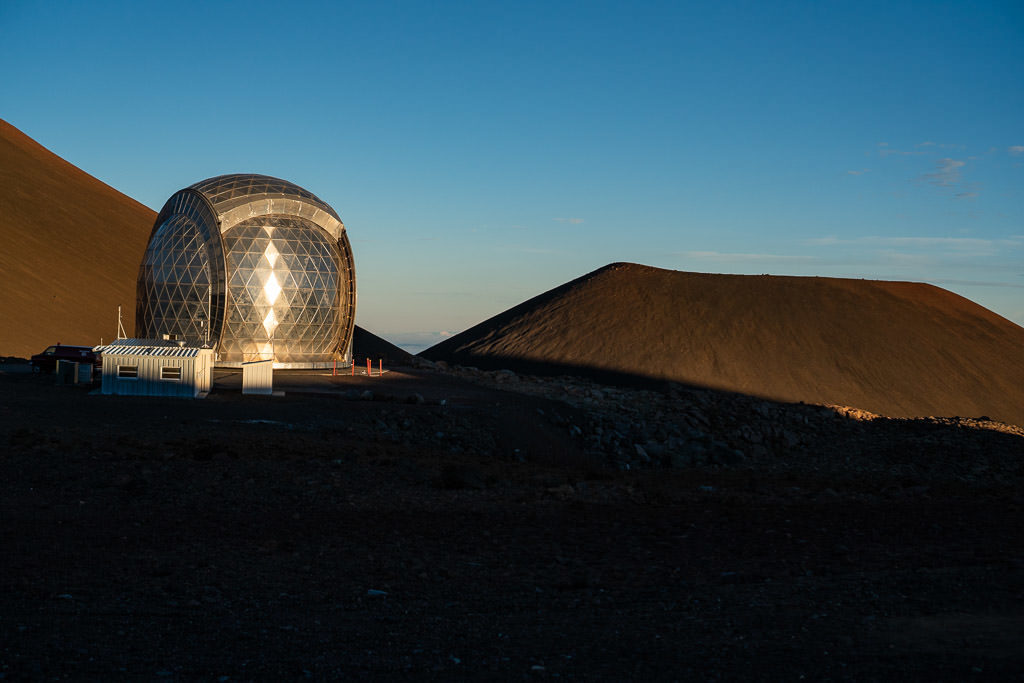
Mauna Kea is the tallest point in Hawaii. And if measured from its base (below the surface of the ocean), it is considered the tallest mountain in the world – at more than six miles tall! It is one of the only places in the world where you can go from sea level to almost 14k feet!
The temperature at the top can also get very cold – even creating blizzard-like conditions at some points in the year on the Big Island of Hawaii (even in summer!)
It is also well known as an astronomical observatory with multiple large telescopes at the Mauna Kea observatory at the summit. The road to the top was built to facilitate the building and use of the telescopes.
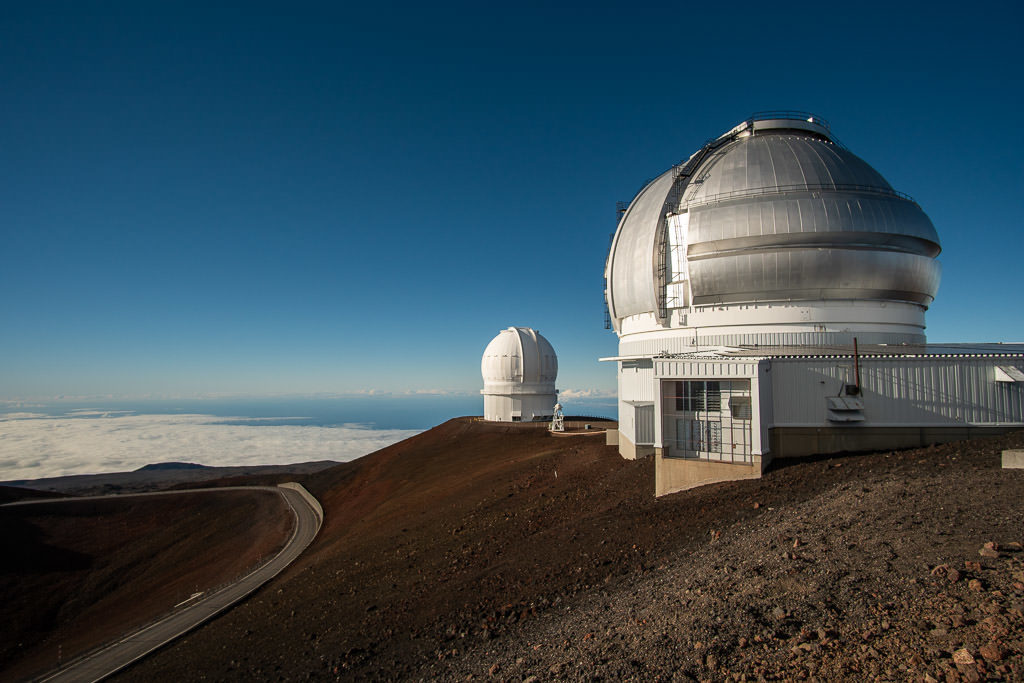
Important Things to Note Before Visiting Mauna Kea
Mauna Kea is Sacred to Many Hawaiians
It is very important to note that Mauna Kea is a sacred place for many native Hawaiians and others who value that ancestry. As you explore, be aware of your surroundings, read signs, and do not go off-trail. Be respectful of the importance this place holds to the Hawaiian people. Mauna Kea deserves your respect, as any holy place would.
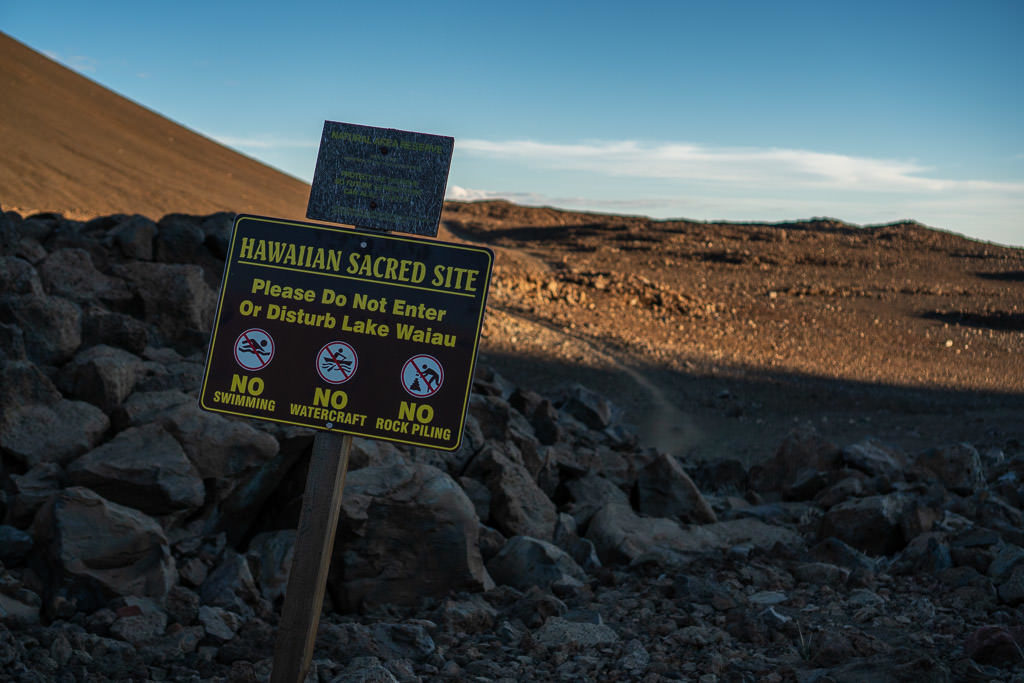
You should also be aware of the controversy around Mauna Kea's telescopes. The Mauna Kea summit is world-renowned for having ideal conditions to study astronomy. But a lot of Hawaiian people do not agree with massive telescopes being built on this sacred land.
Don't be surprised if you see signs or protests during your visit as this is an extremely hot topic on the Big Island. When we were there in summer of 2018, protests were planned around the movement of parts for the latest $1.4-billion telescope that construction will begin on. While protests have delayed the building of this telescope for some time, this new move is sure to cause a lot of upset.
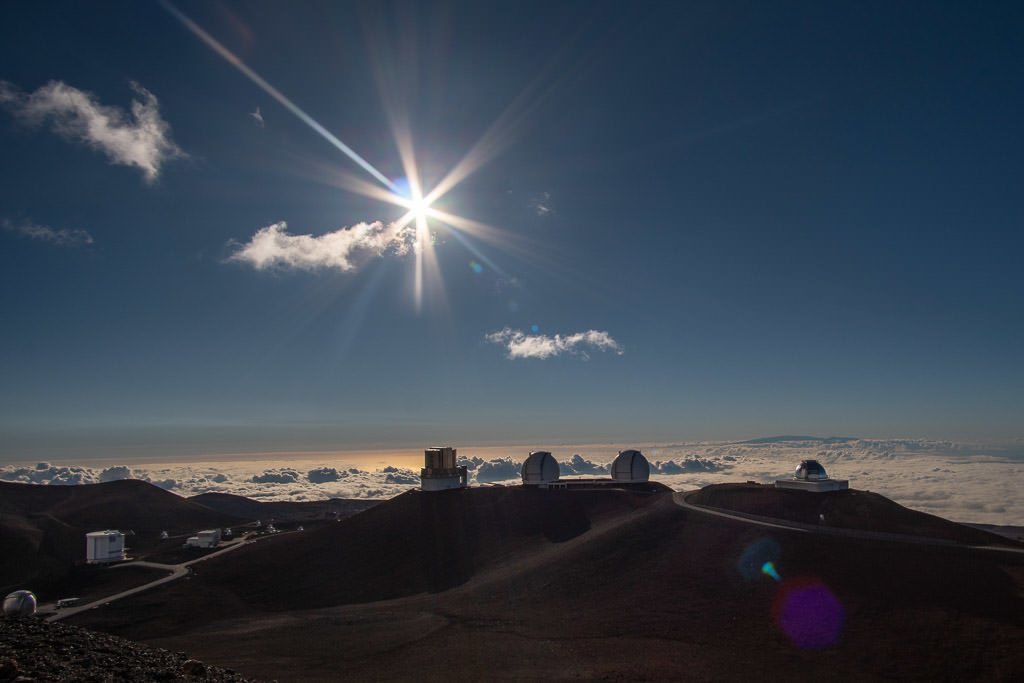
Altitude Sickness is Possible
There are also some personal safety and well-being concerns to keep in mind. We've already mentioned the drive up can get treacherous fast and requires a 4×4 vehicle. But, it is also important to be aware of the quick change in altitude you'll experience.
It is not recommended for people who are pregnant or in poor health. Also, do not plan to go up to the summit within 24 hours after you scuba dive.
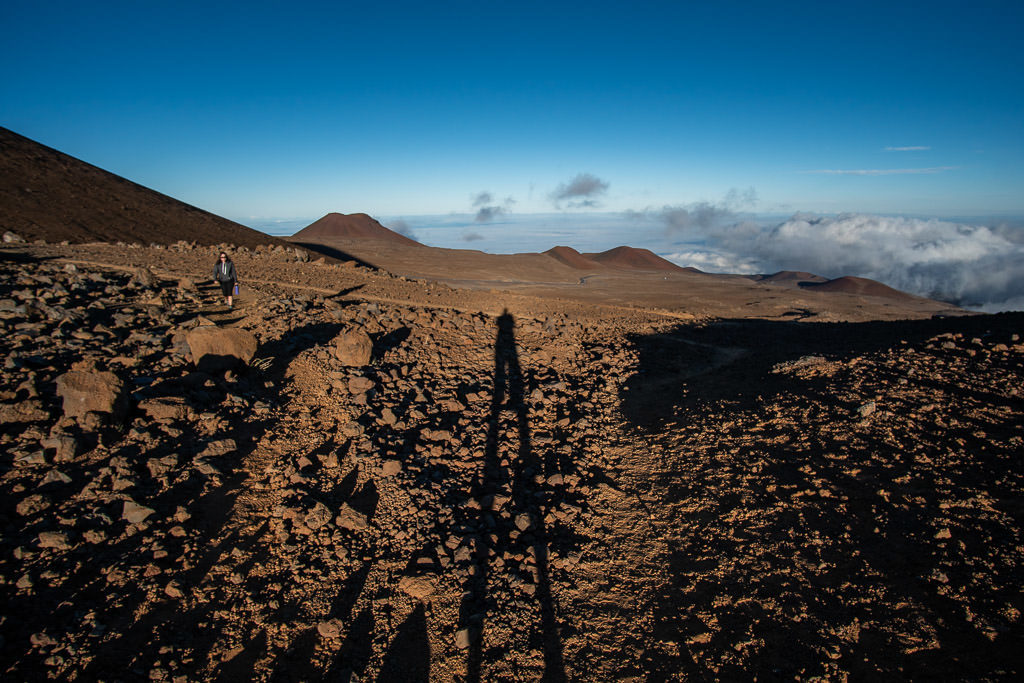
Altitude sickness is a very real issue for anyone though, since you go up about 4,000 feet from the Visitor Center to the Mauna Kea Summit – the highest point in Hawaii. This means 40% less oxygen!
So, be sure to stop for at least 30 minutes at the Mauna Kea Visitor Information Station to help yourself acclimate. Also, drink tons of water, and don't overdo it. We are basically Coloradans, and I struggled to hike around at the top because I hadn't had enough water. Rest often or drive down lower, if needed.
Bring Provisions
Aside from the Visitor Center (which was actually closed for maintenance on our recent visit), there isn't anything in this area. The Saddle Road is pretty barren. So, fill up with a full tank of gas, charge your cell phone, bring plenty of water (and DRINK IT!!!), and have snacks or a meal packed as well.
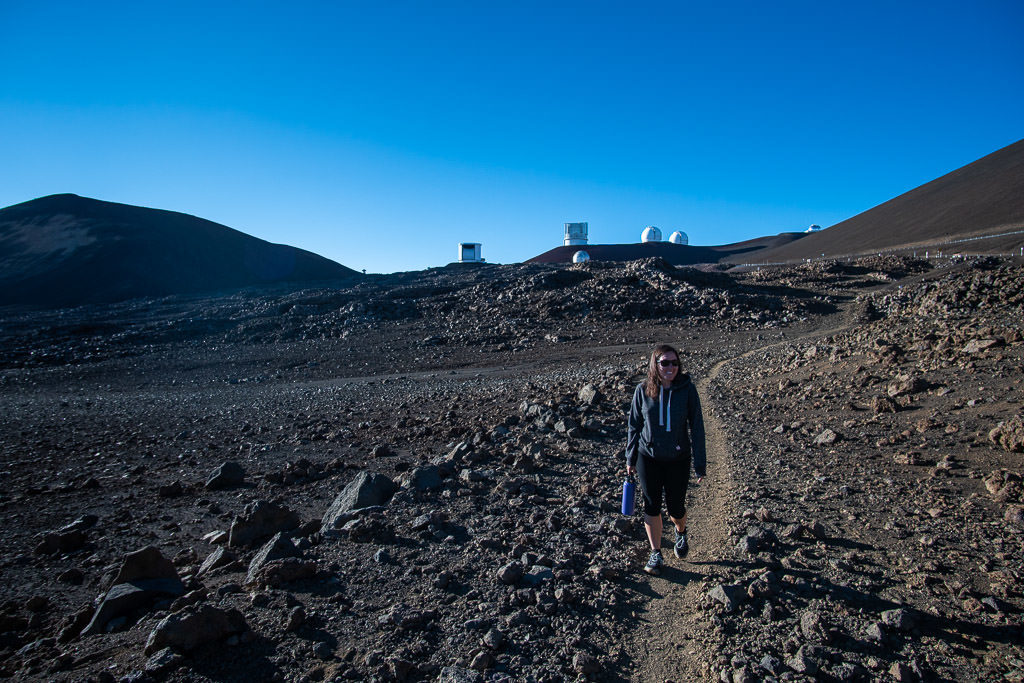
Getting to the Mauna Kea Summit for an Amazing Sunset
Now that you are in the right respectful mindset and know what to expect, it's time to plan your visit. From Hilo, the drive to the very top will take about 1.5 hours – more time if there is inclement weather. For example, we hit very dense fog on the way up that slowed us down.
Honestly, it was a bit intimidating. But we were too far to turn around (and couldn't see enough to even attempt it), so we just pushed through. Be aware at all times and don't start the ascent if you aren't confident.
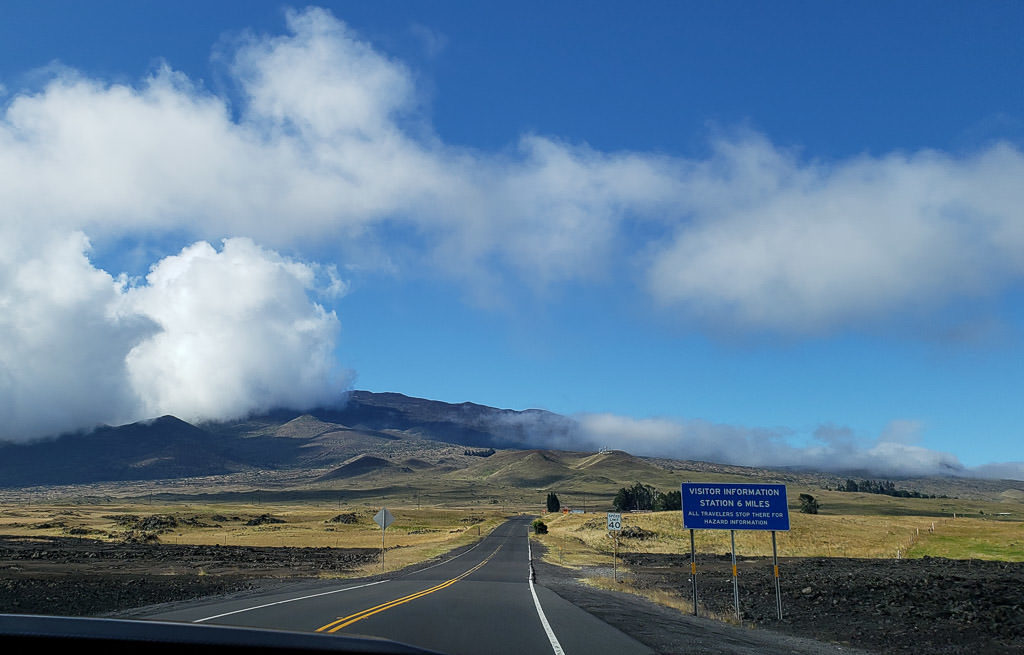
You should also check if the summit access road is even open before heading that way. Sometimes it is closed for weather, including high winds, or for construction. However, don't let the weather fool you too much. If it is open and just cloudy, that doesn't mean sunset won't be amazing. You're going above those clouds, after all!
After passing the Visitor Center and gift shop (where you WILL stop to acclimate, right?!?!), you'll see a sign reminding you to engage four-wheel drive. Then, five winding miles later on a steep, graded gravel road, you'll be at the top of Mauna Kea. On a clear day, I'm sure the views are amazing on this drive! But, we just saw fog.
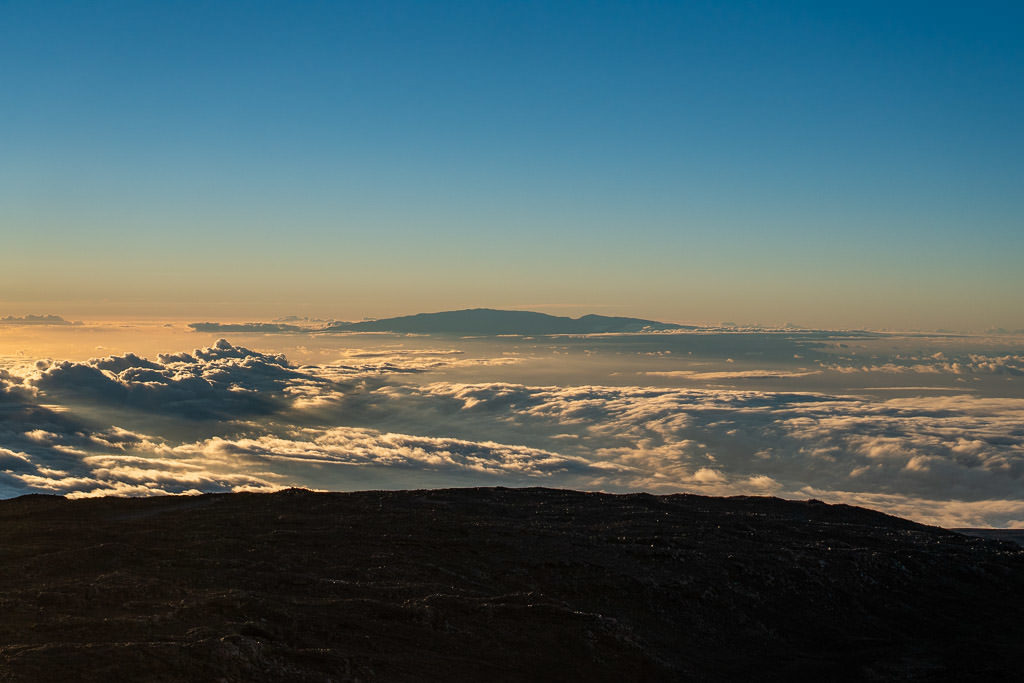
Once at the parking lot at the top, the views were spectacular though – other-worldly, even. There was a sea of clouds below us and we could see all the way over to Haleakala on Maui (which we watched the sunset at last year). You'll also definitely want to spend some time wondering at the giant telescopes. They make this place seem even more like another planet!
Mauna Kea Sunset Tips
If going for sunset, we'd suggest planning to be on the summit at least an hour early to do some exploring. And plan to leave right away after sunset since the Mauna Kea Summit closes shortly after dusk.
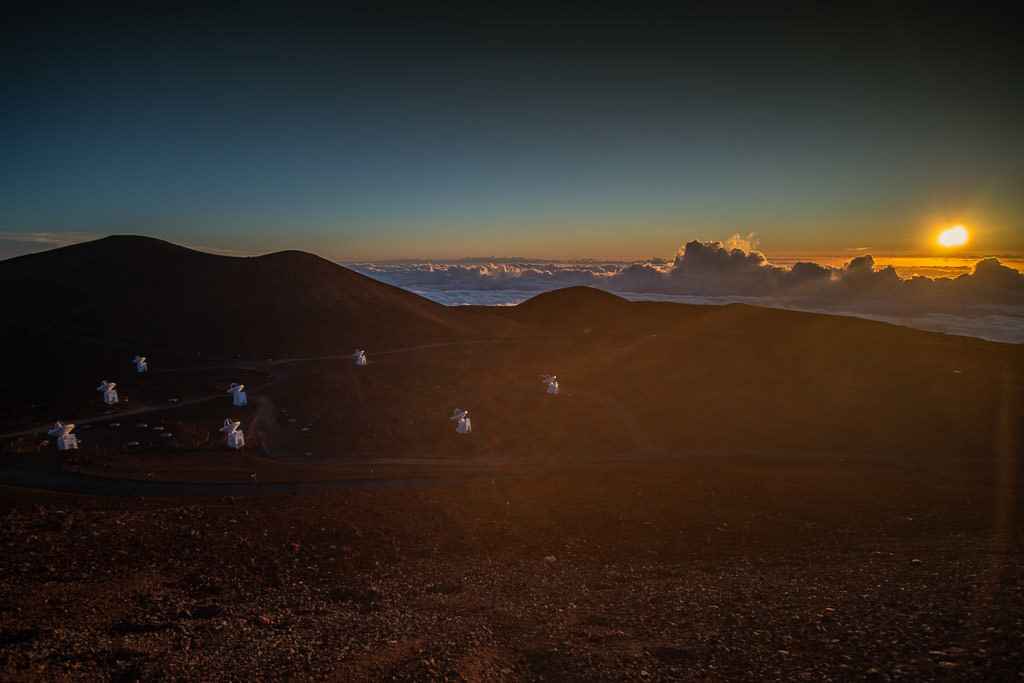
It's an amazingly magical experience to see the sunset from what feels like the top of the world. While most people were near the telescopes for the show, we found a spot further away and took it all in with just a few other people – instead of the larger crowd.
There are tour buses that shuttle people in, so it can get quite crowded at times. However, this is the only option for some people who don't want to make the drive or who want to head the warning many car rental agencies give not to take the car up there!
One of the Mauna Kea summit tours may also be the best option if you want a safe way to take in the scenic drive with less stress regarding the steep, unpaved road. Most even give you hot chocolate as you stargaze in this amazing place with no light pollution!
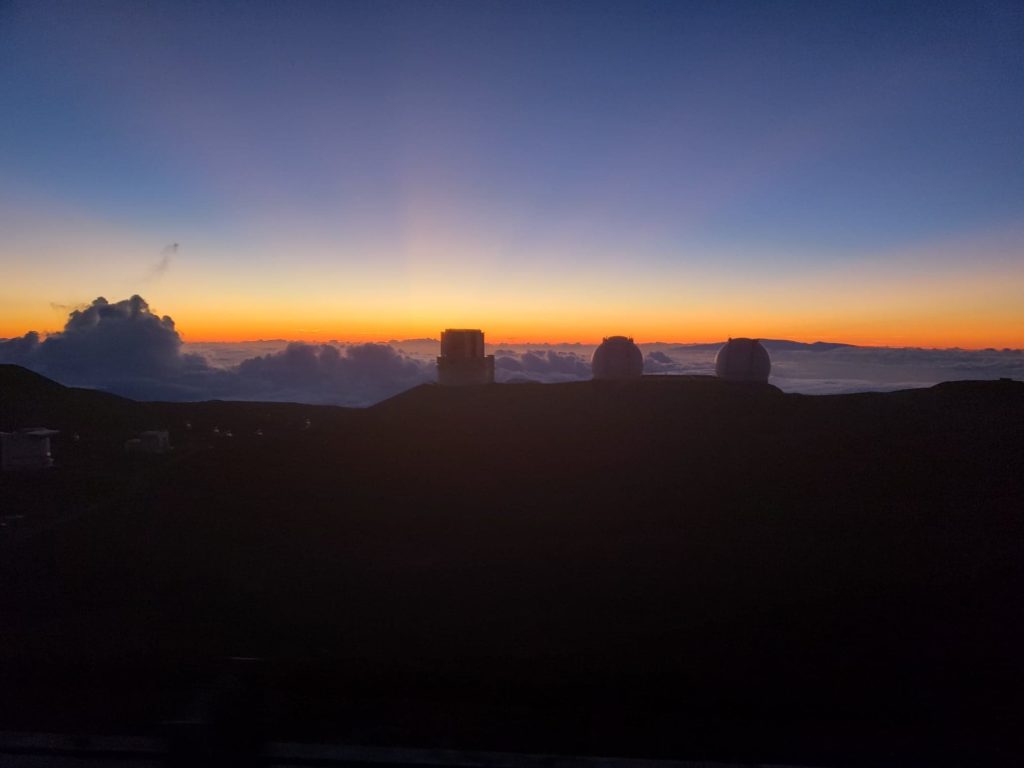
Other Unique Stops on or Near Mauna Kea
We highly recommend planning some additional daylight time to explore the area around Mauna Kea. There are some great hiking spots and other areas of interest, you won't want to miss.
Pu’u Huluhulu Cinder Cone Hike
We wandered around this small mound above the lava fields on our first trip to the area. It's definitely worth getting to the area early for! It is a quick but scenic stop. (Read more in this article).
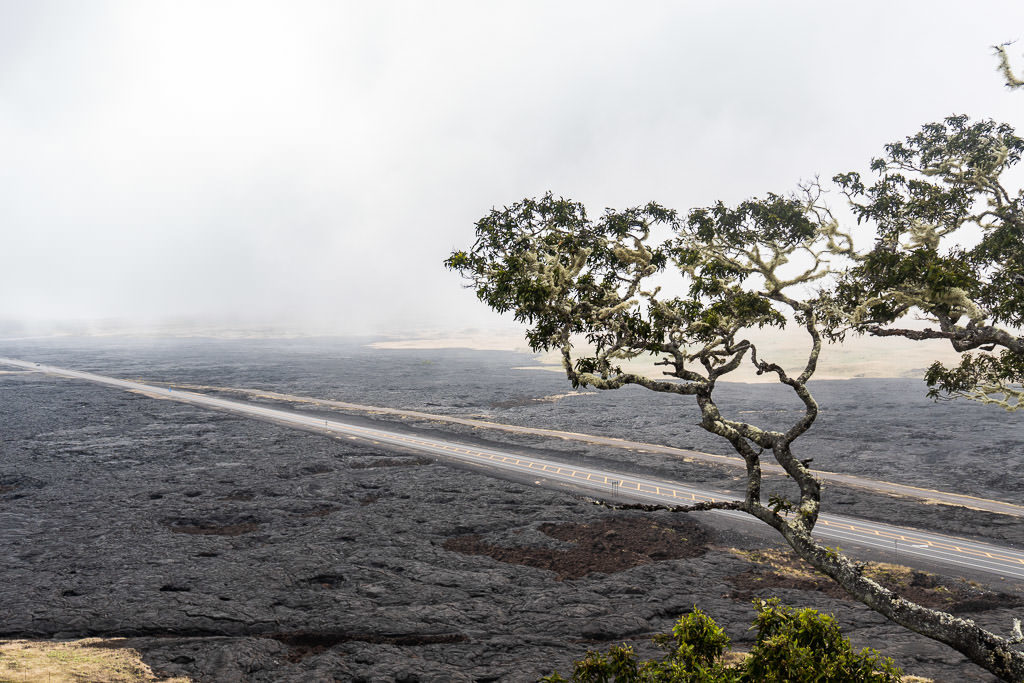
Hike to Lake Waiau at the Mauna Kea Summit
Just before you turn up to see the telescopes, there's a little parking area where you can stop for a short walk to Lake Waiau. As mentioned, Mauna Kea is a sacred place overall, but this mysterious lake holds even more special significance. So, be sure not to disrupt it or the offerings people have left there.
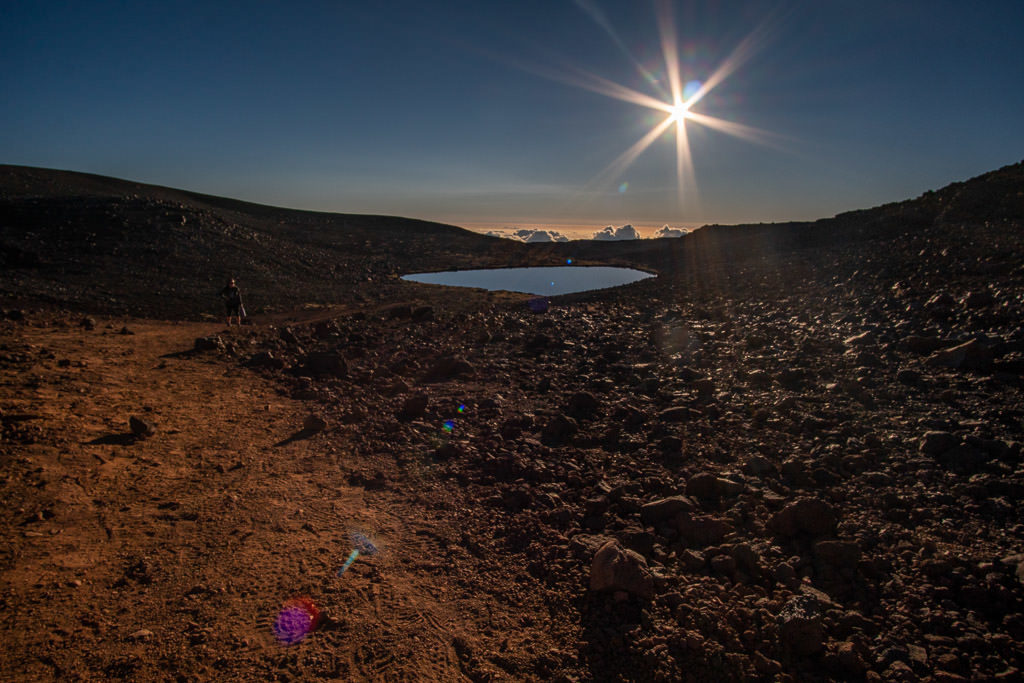
The most interesting thing we learned about this lake is that scientists aren't sure how or why it is there. It is one of the highest lakes in the U.S. and is a rare feature on a volcanic slope. There is also a legend that a Hawaiian snow goddess used to bathe in it.
After a short, but difficult hike (due to the high altitude), we found ourselves alone at this serene place. I spent a few moments to thank God for the people and their ancestors who cherished this place enough to protect it, marveled at the still water, and wandered back up to our car. It wasn't amazingly scenic, but its meaning did feel heavy and we felt honored to be in the presence of something so significant to others.
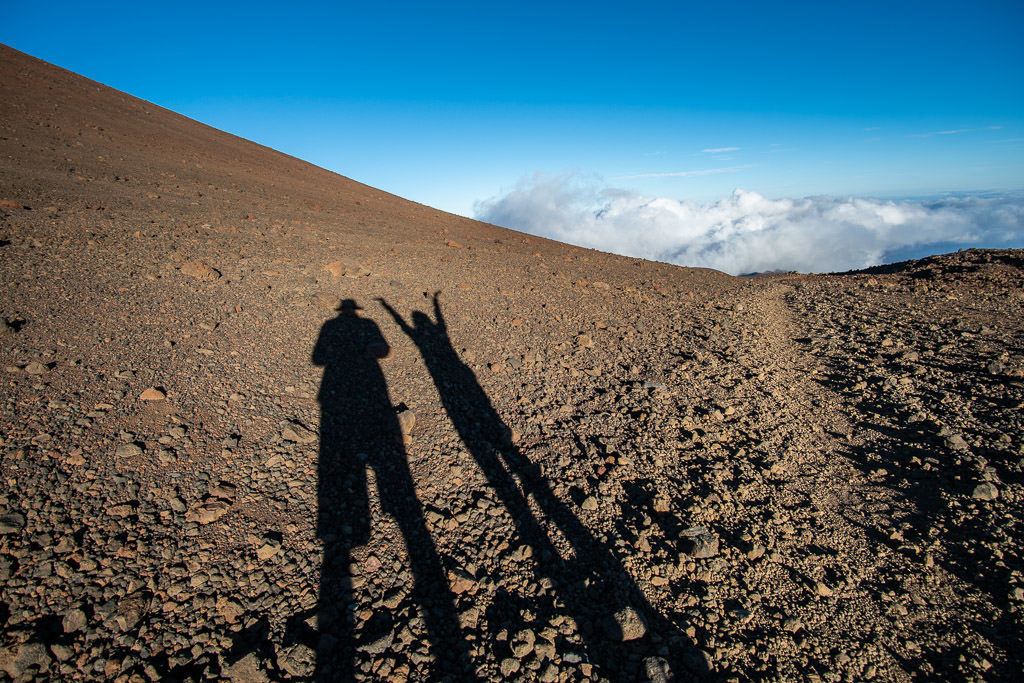
Stargaze on the Road to Mauna Loa
As mentioned, you will get kicked off the Mauna Kea Summit shortly after sunset. And, really, you don't want to stay for too long since the weather can drop under freezing at night – even in the middle of summer. (It was in the low 40s (F) when we were there in early July!) However, it is a shame to leave this area without taking some time to admire the clear night sky in absolute darkness.
A great place we found to do this is on the barely trafficked Mauna Loa Observatory Road. During the day, you could drive down it a long ways to get to the base of Mauna Loa (which you can also hike up) – but that's quite the feat, so we stuck to stargazing nearby. There is also some very interesting volcanic rock to admire all over this area.
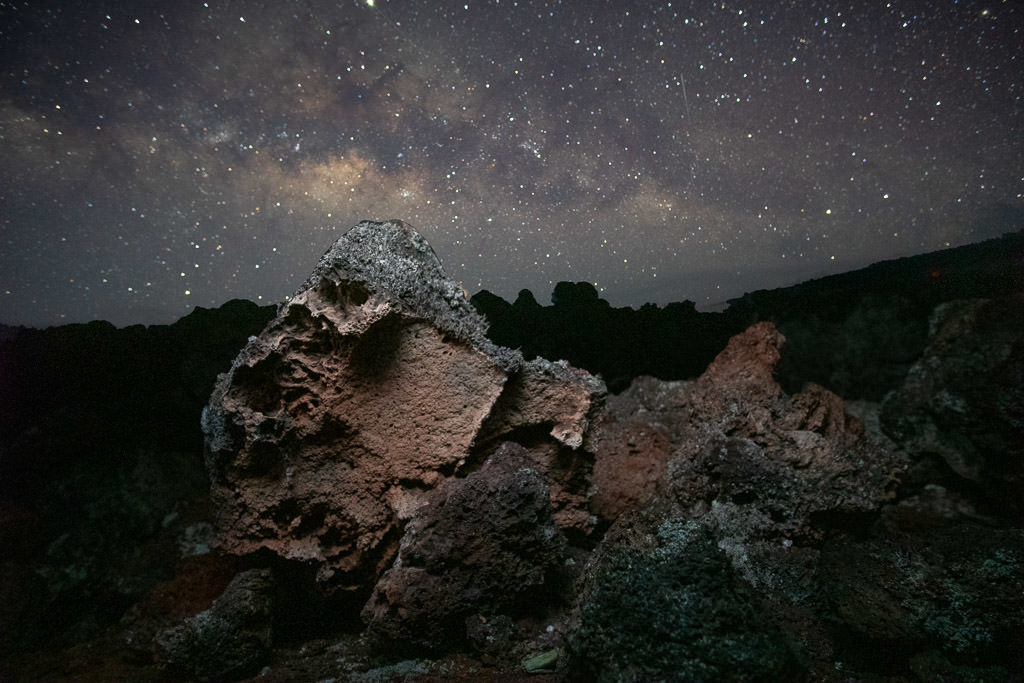
Surrounded by lava rocks, we stopped for a little while to take in the stars. Every once in a while, we'd look up to see a light shining through the fog in what looked like the middle of the sky – another car looping back down Mauna Kea. It made for a memorable Hawaiian night. One of many we've been blessed with.
And if you are dead set to stargaze on the top of Mauna Kea, there are companies who offer tours and will do the driving for you!
We hope you have a wonderful visit to the Big Island and have a chance to explore this amazing volcano. A Mauna Kea sunset is hard to beat! Just be sure to take a moment to appreciate the fact that you are allowed to experience such a special place.
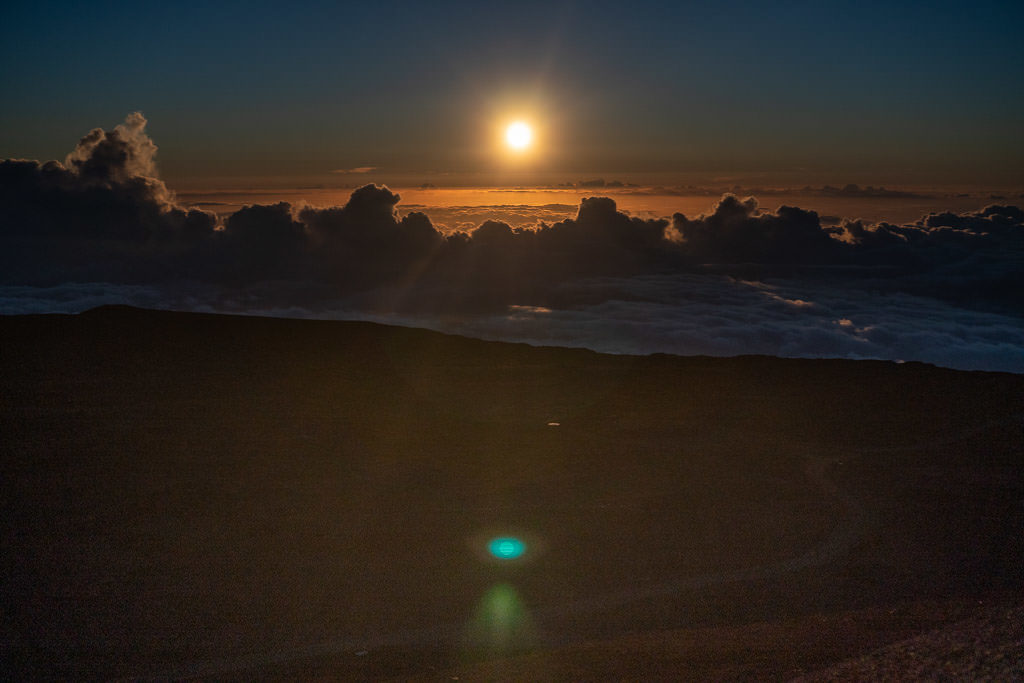
Check out our other suggestions and tips for visiting all six Hawaiian Islands! And if you want to know more about how we made this vacation happen, read our guide to pet and housesitting!

